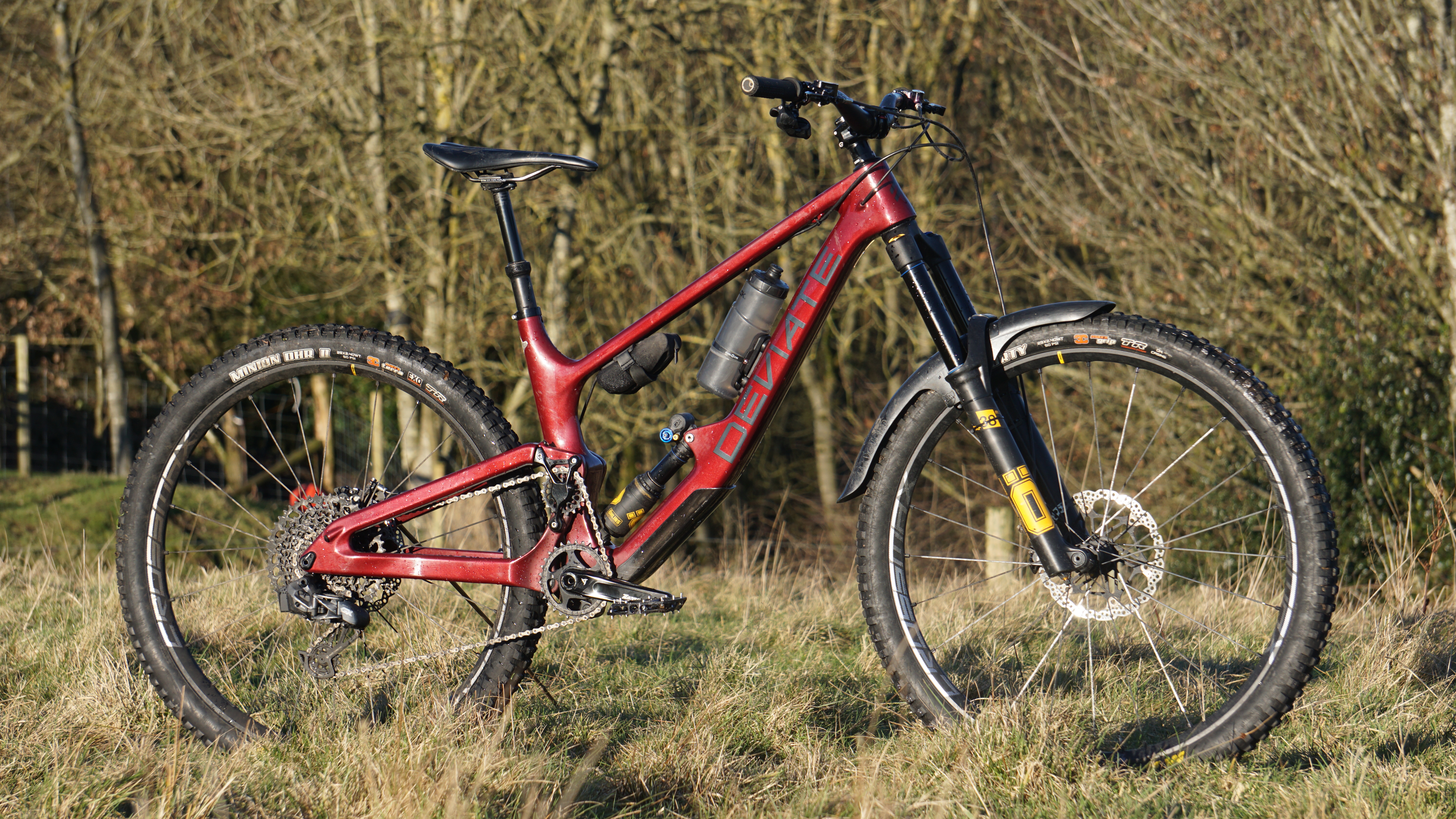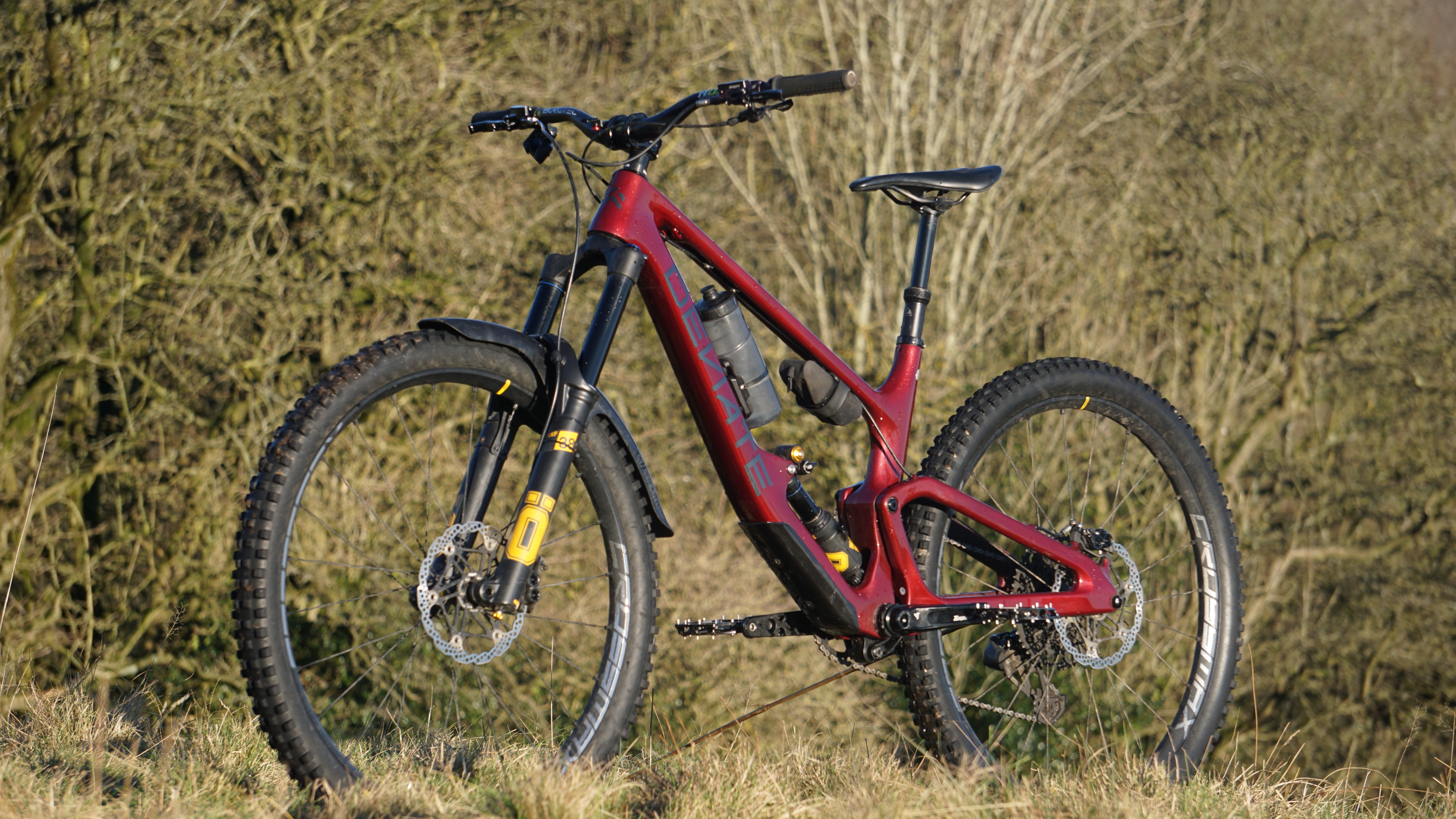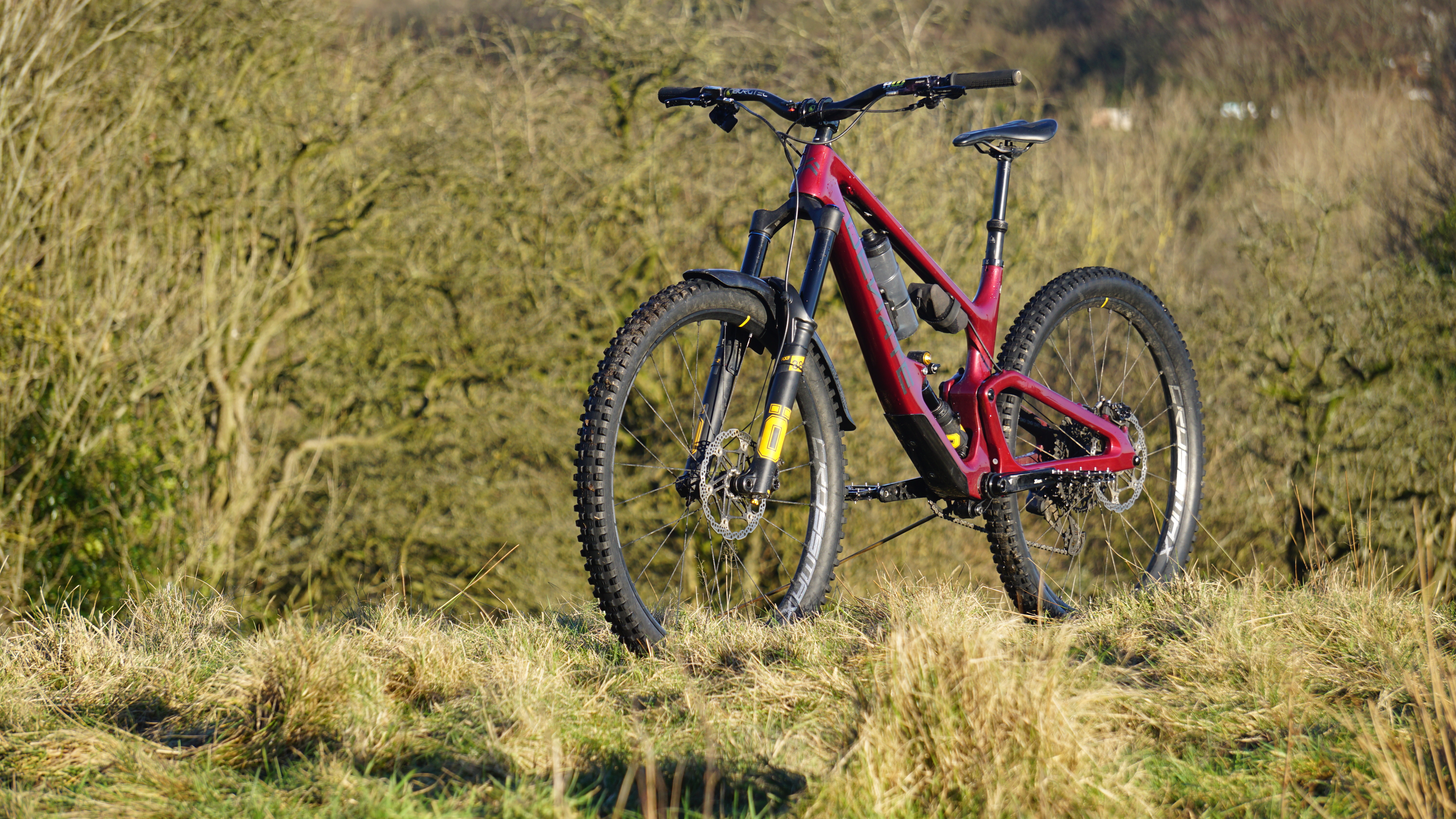Of all the bikes I rode in 2022 though there was one that stood out for me, and anyone that’s seen our Editors Choice features either in the mag or on the site will know I gave one of my awards to the Deviate Claymore. It’s fast and fun, composed in the rough and the steep but also versatile and easy to get along with.
Vital stats
- Frame: Deviate Claymore, carbon, 165mm travel, size L
- Shock: Öhlins TTX2Air, 230 x 60mm, 200psi, LSC fully open, rebound 3 clicks (from open)
- Fork: Öhlins RXF38 M.2, 170mm, 95-100psi main chamber, 250psi in ramp chamber (might increase this), 3 clicks (from open) LSC, 1 click HSC, rebound 2 clicks (from open)
- Wheels: Mavic Crossmax XL S
- Tyres: F: Maxxis Shorty Gen 2 29 x 2.4in 3C MaxxGrip DH Casing, R: Maxxis Minion DHR II 29 x 2.4in 3C MaxxTerra EXO
- Drivetrain: SRAM GX Eagle AXS, Race Face Turbine 165mm cranks, 32T Race Race chainring
- Brakes: Hope Tech 4 V4, 200/203mm rotors
- Stem: Burgtec Enduro MK3, 35mm, 35mm
- Bars: Burgtec Ride High 35mm, 800 x 38mm
- Grips: Ergon GRF1
- Seatpost: PNW Loam, 31.6mm, 200mm w/ Wolftooth Remote Lever
- Pedals: Hope F22 Flats
- Other stuff: Shack Wrap frame protection, Fidlock 600ml bottle sytem, RRP Proguard mudguard
- Weight: 16.2kg
In my waffle for that award I said that if there was one bike from the year that I could keep in the shed then it would be the Claymore. Well I like to think of myself as a man of my word, so I made the decision to get rid of my beloved RAAW Madonna V2.2 (one of my favourite bikes ever) and go for it and buy a Claymore.
So, here it is… my own personal Deviate Claymore. It’s built with a mix of old test kit and will be used for testing other parts throughout the year, but the current spec is pretty much my own ‘dream build’.
Frame
I’m around 183cm tall and I went for a size large frame (same as I tested). The frame itself is full carbon and features what I’m going to call semi-external routing – the hoses are routed under the top tube in the front triangle and then internally on the rear triangle. Personally, I’d prefer full external routing but I can live with this set up.
Latest Singletrack Merch
Buying and wearing our sustainable merch is another great way to support Singletrack
The Claymore uses Deviates high pivot suspension design to deliver 165mm of rear wheel travel and all pivot points feature grease ports for ease of servicing and longevity. On the bottom of the downtube is a bolt on carbon frame protector to ward off rock strikes, while in the front triangle are bottle mounts and accessory mounts – no mud and water collecting storage drawers to be seen – something I was keen on.
Suspension
Taking care of the 165mm of rear travel is an Öhlins TTX2Air. It’s a shock that I’m familiar with after testing it and running on on both a Santa Cruz Megatower and my RAAW Madonna. Each time I’ve used TTX2Air I’ve been impressed with the performance – properly supple like a coil shock but plenty of support and infinitely adjustable.
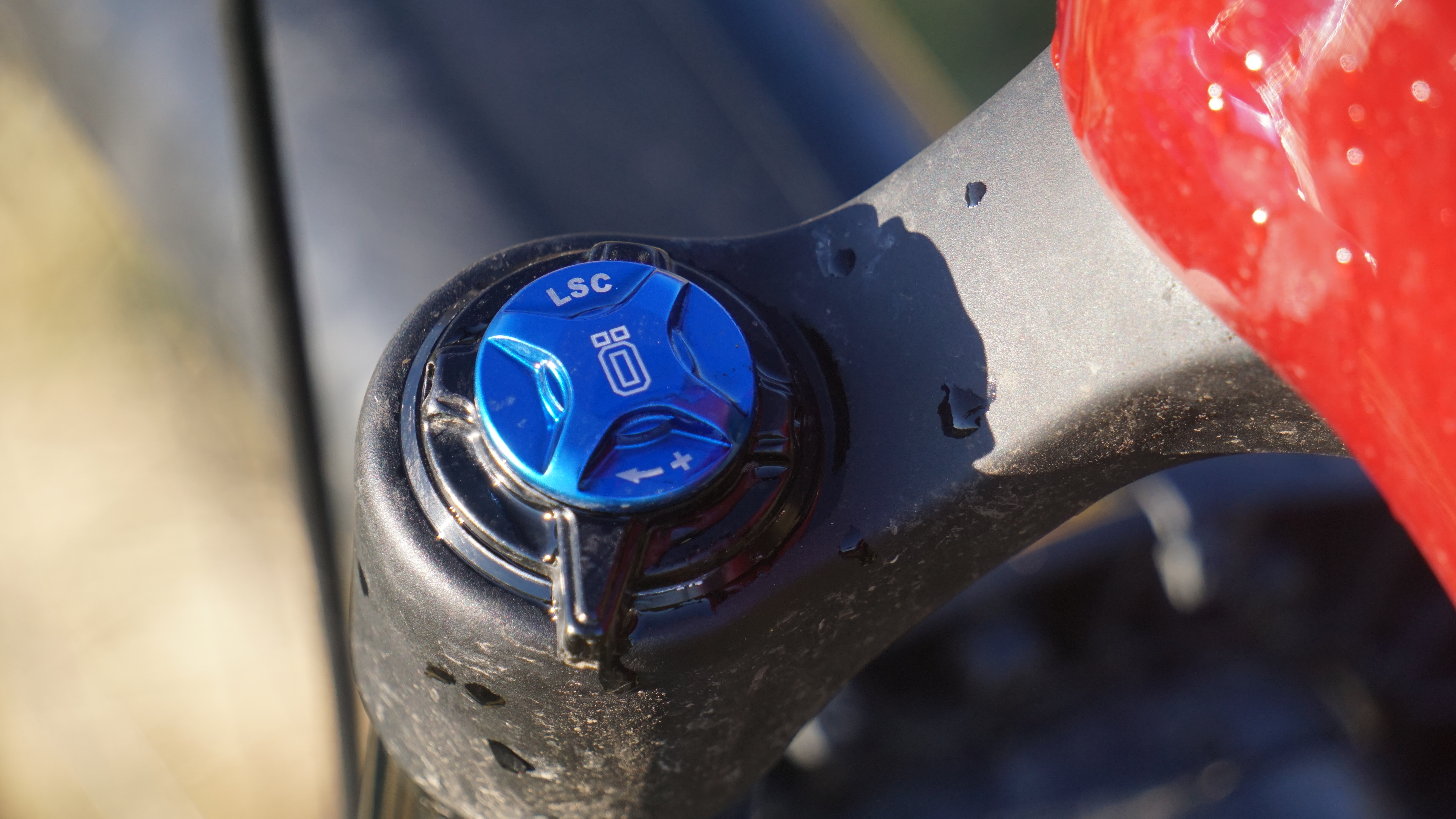
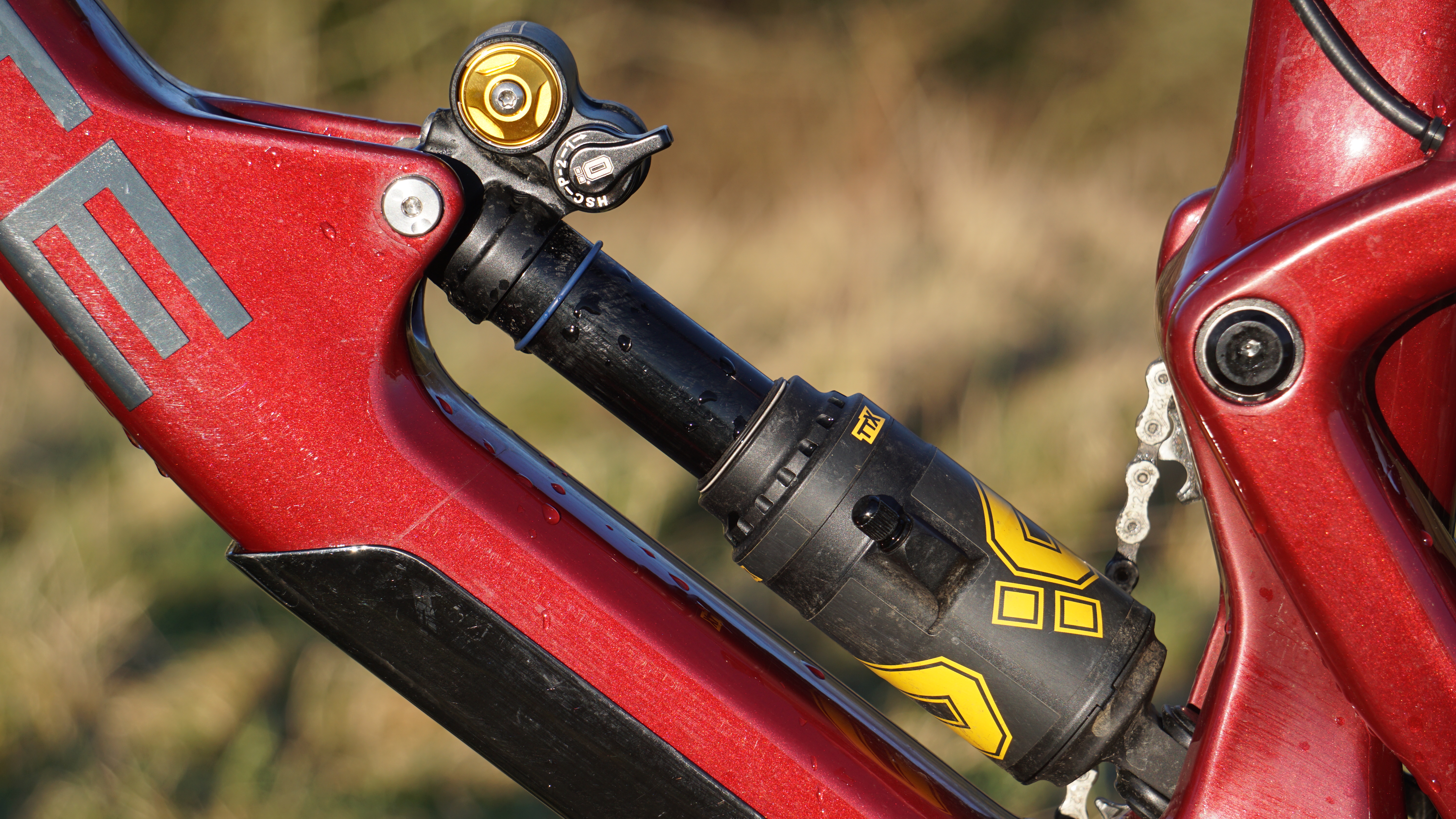
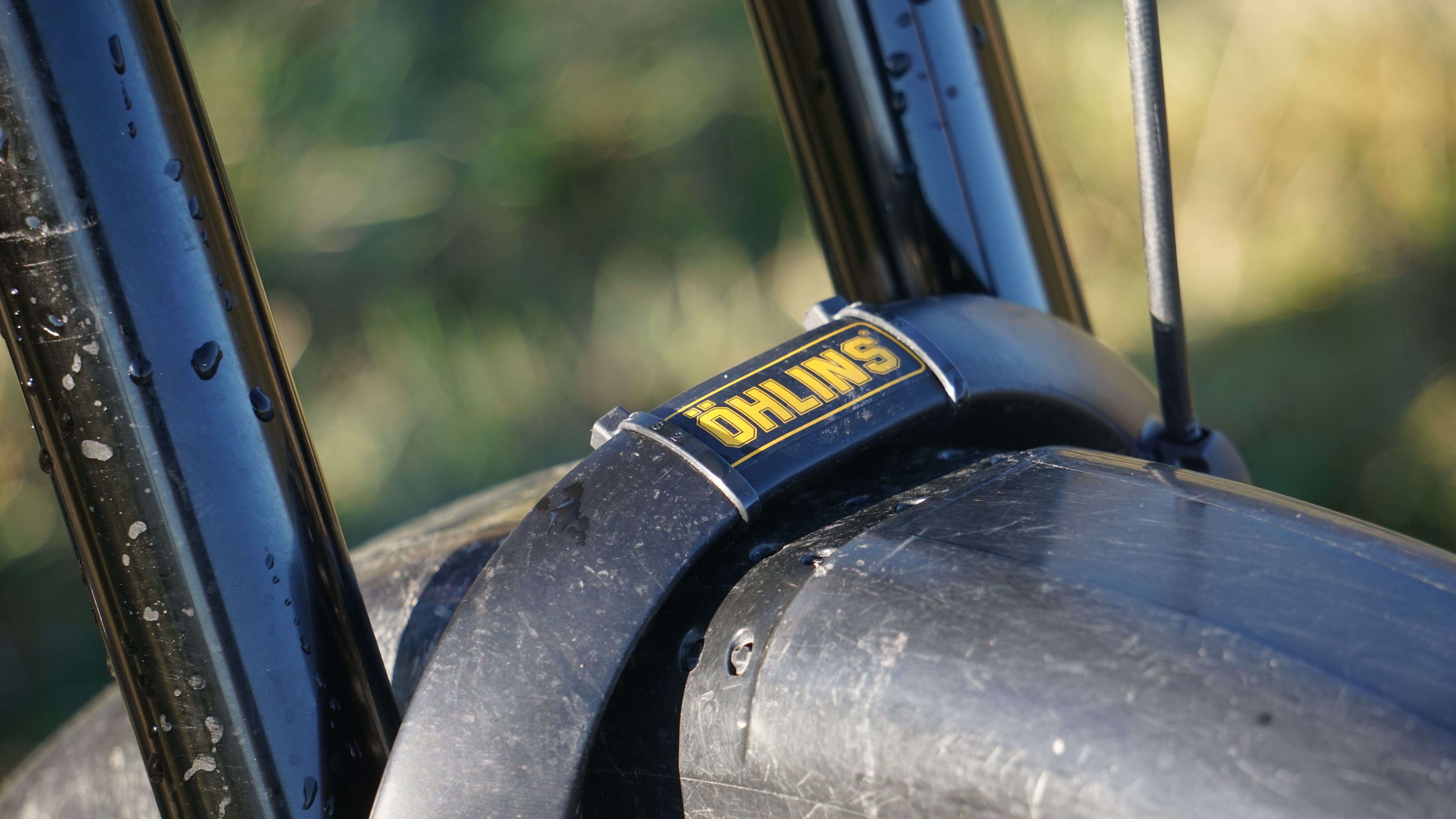
Up front is a 170mm Öhlins RXF38 M.2. I had the choice of the Öhlins or a RockShox Zeb. I absolutely love the Zeb, and even gave it an Editor’s Choice award, but decided to go with the Öhlins as I wanted to have a play with pressures and see if I could get a bit more from it. When I tested it, I found that it was fantastic fork once you got it moving and things got properly rough, but that it wasn’t necessarily as good on the smaller stuff as some other forks.
I’m currently playing with pressures, reducing the main chamber and increasing the ramp chamber. Currently at around 95psi in the main chamber and 250psi in the ramp but feel I may need a little more support.
Brakes
For me, brakes are one of the biggest upgrades you can do on your bike. The best disc brakes mean you can ride faster and more confidently on steep tech terrain, and they currently don’t get any better than the Hope Tech 4 V4. They offer amazing power but in a really manageable and modulated way, look great and come with Hope’s quality service.
I’m currently running a 200mm rotor up front and 203mm out back. Set up wise, I have the bite point adjust screw wound all the way out, and the levers around 25mm form the bars meaning they are fairly close at the locking up point.
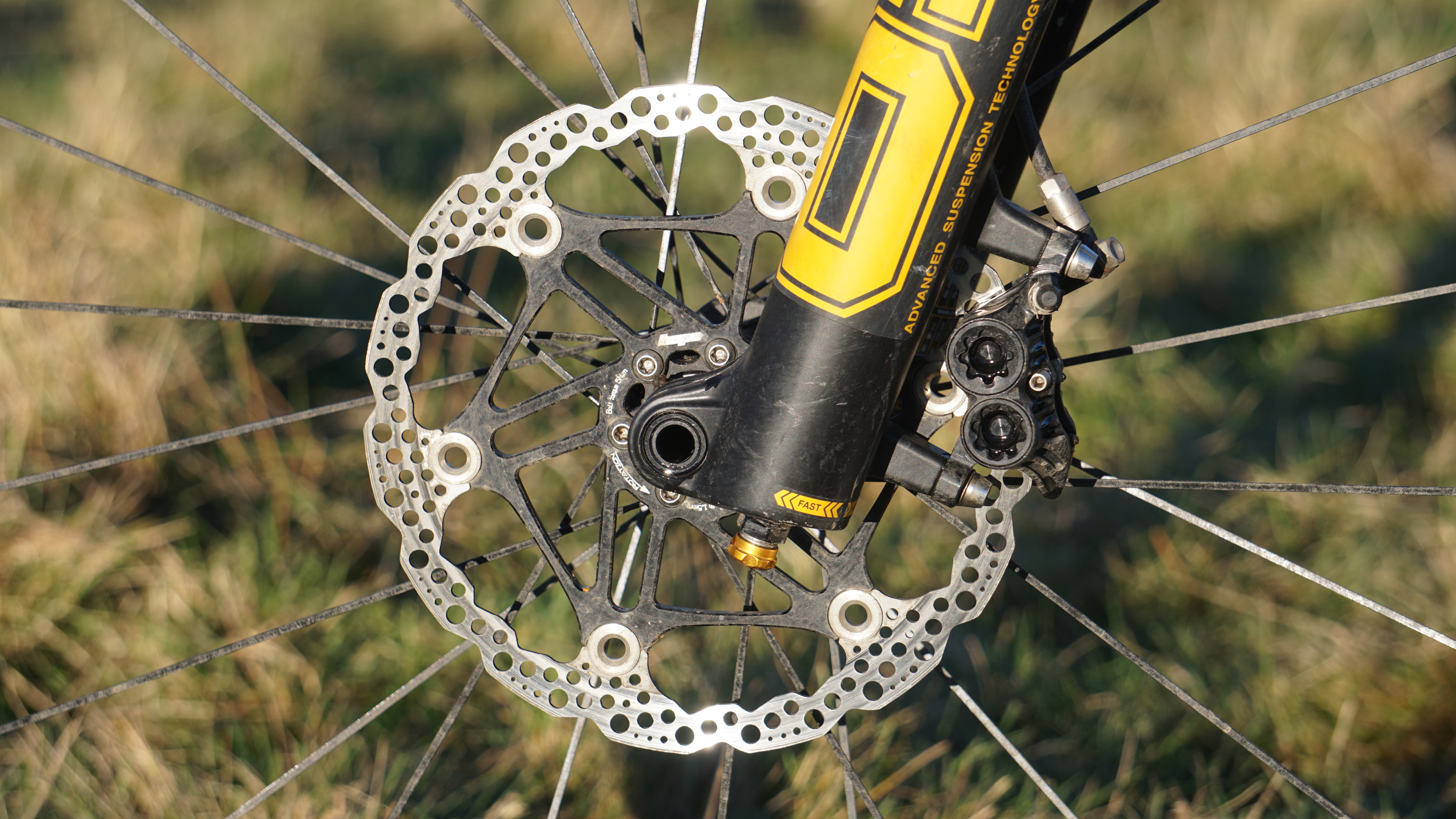
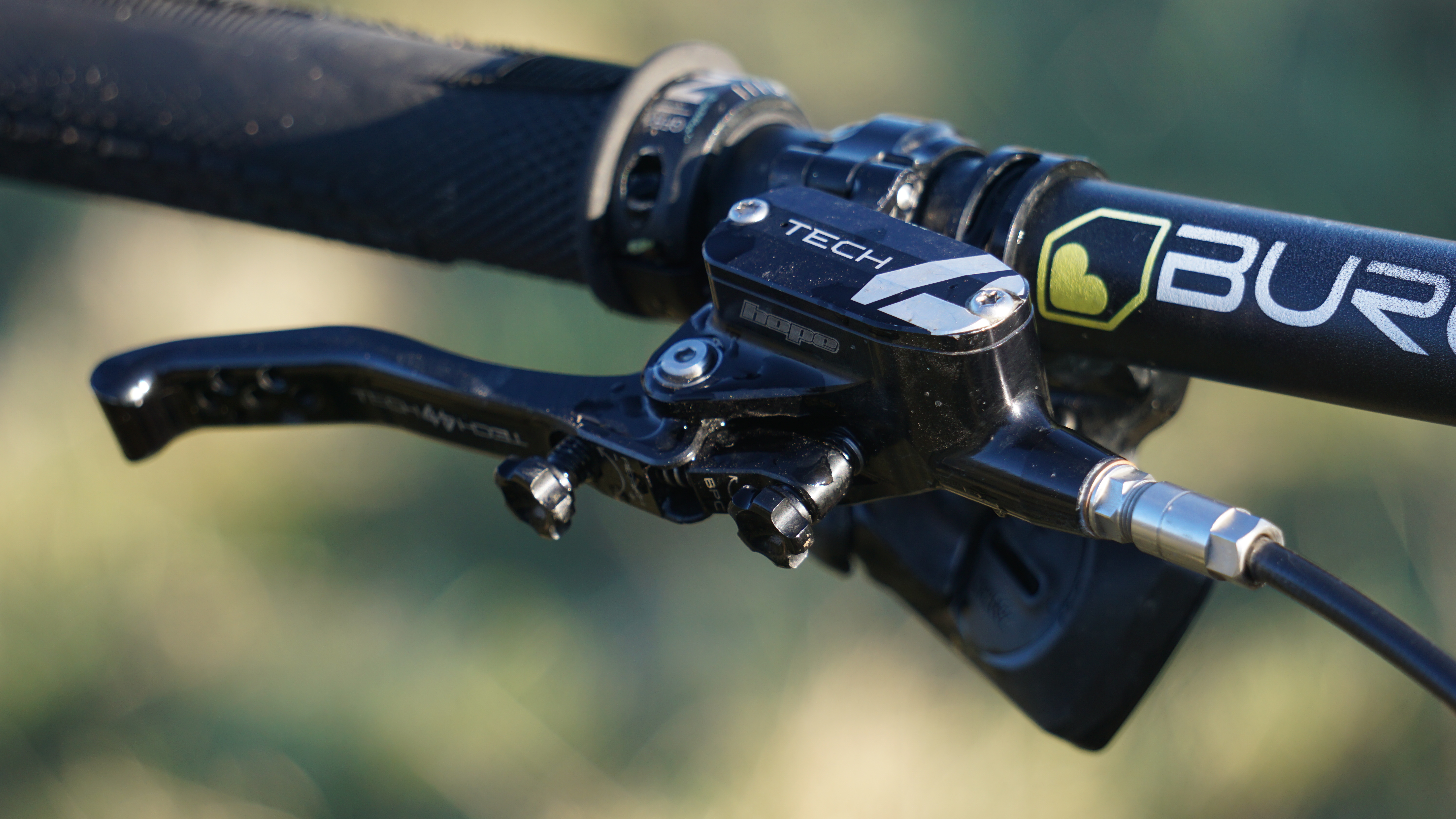
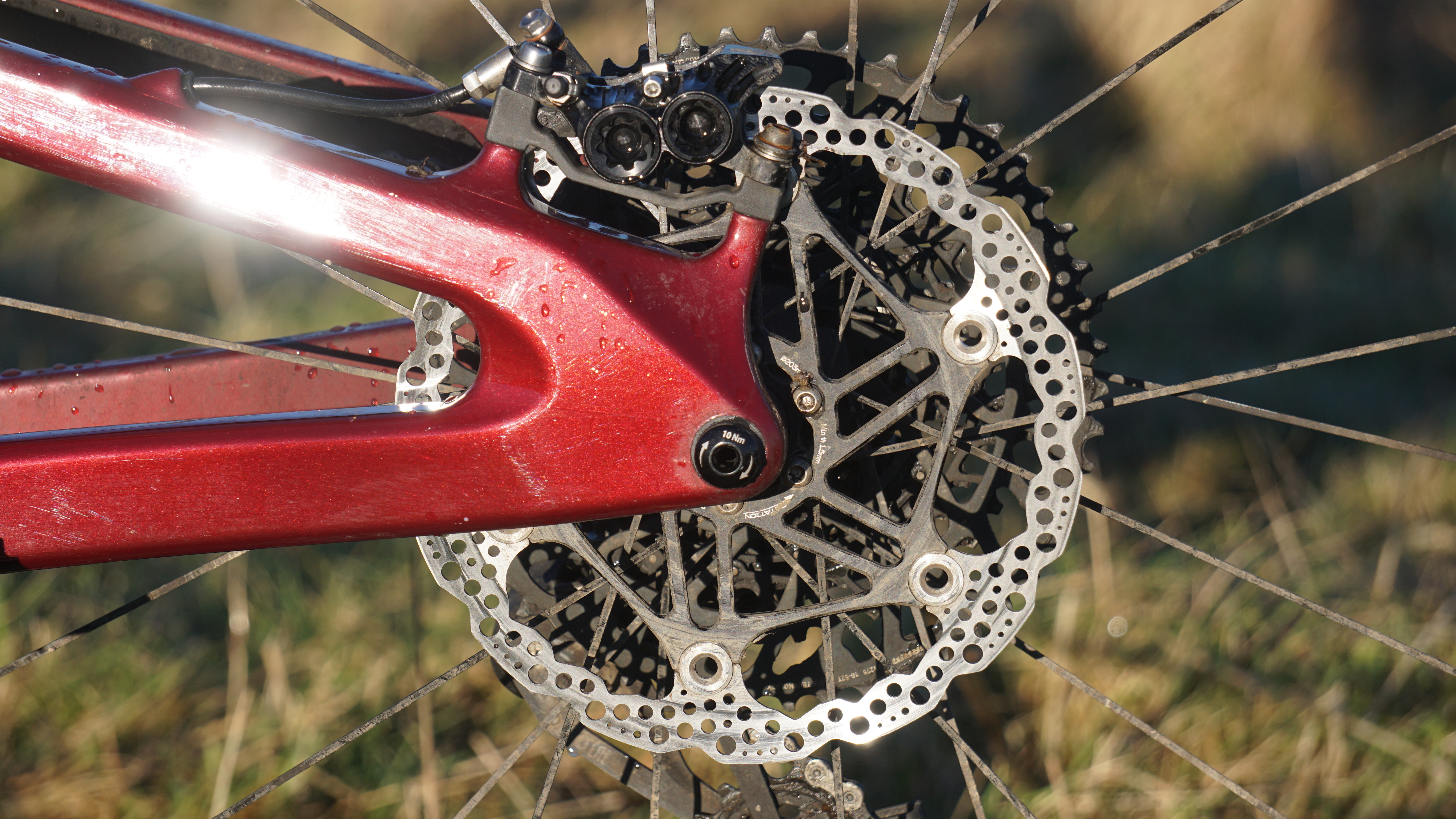
Wheels & Tyres
I’m currently running a set of Mavic Crossmax XL S wheels, which I have on test, and have been impressed with. They’re Mavic’s flagship alloy trail wheels but are also rated for enduro. They’re reasonably light, offer a great ride feel and so far have stood up to everything I’ve thrown them even with only 24 spokes.
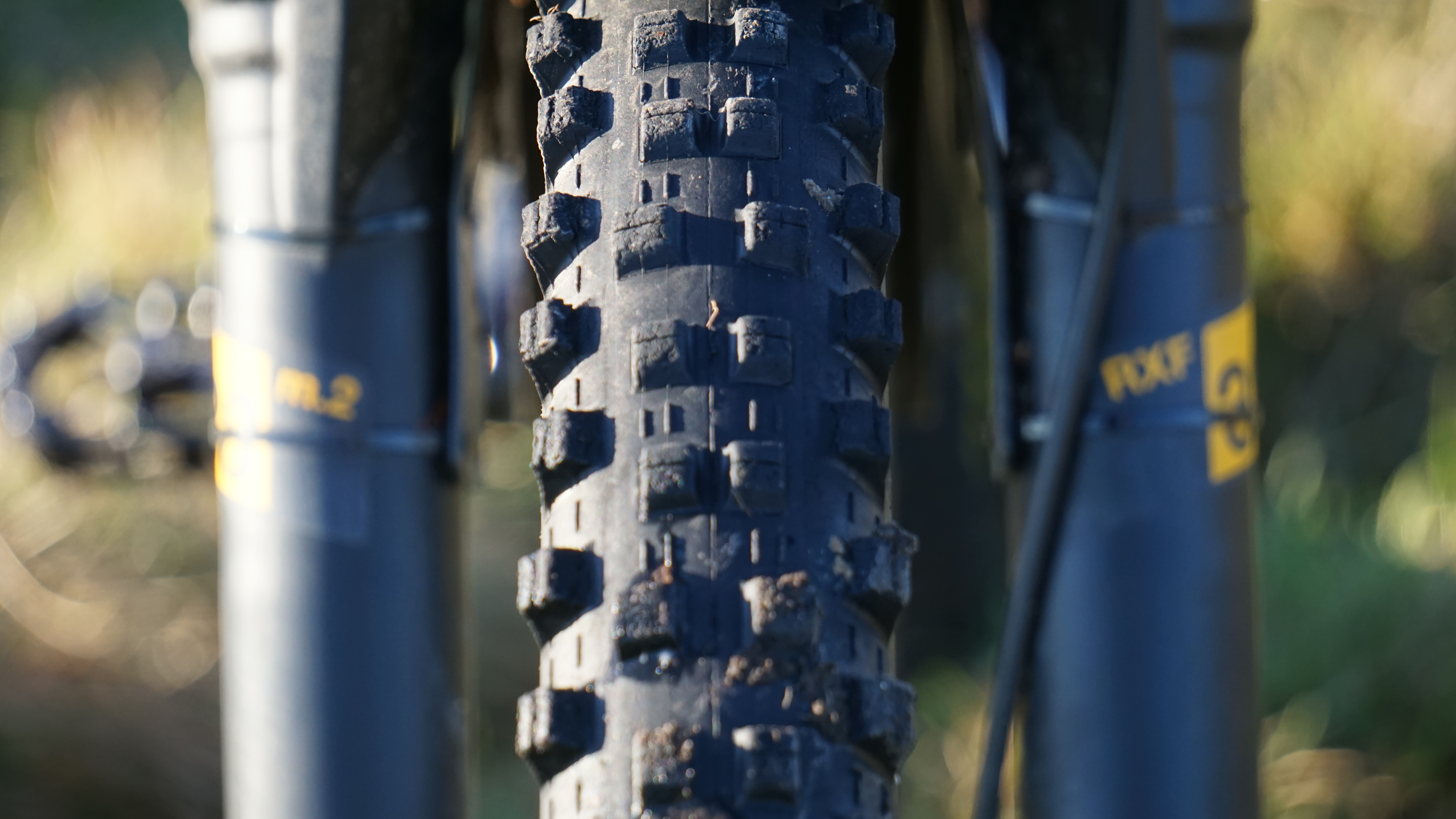
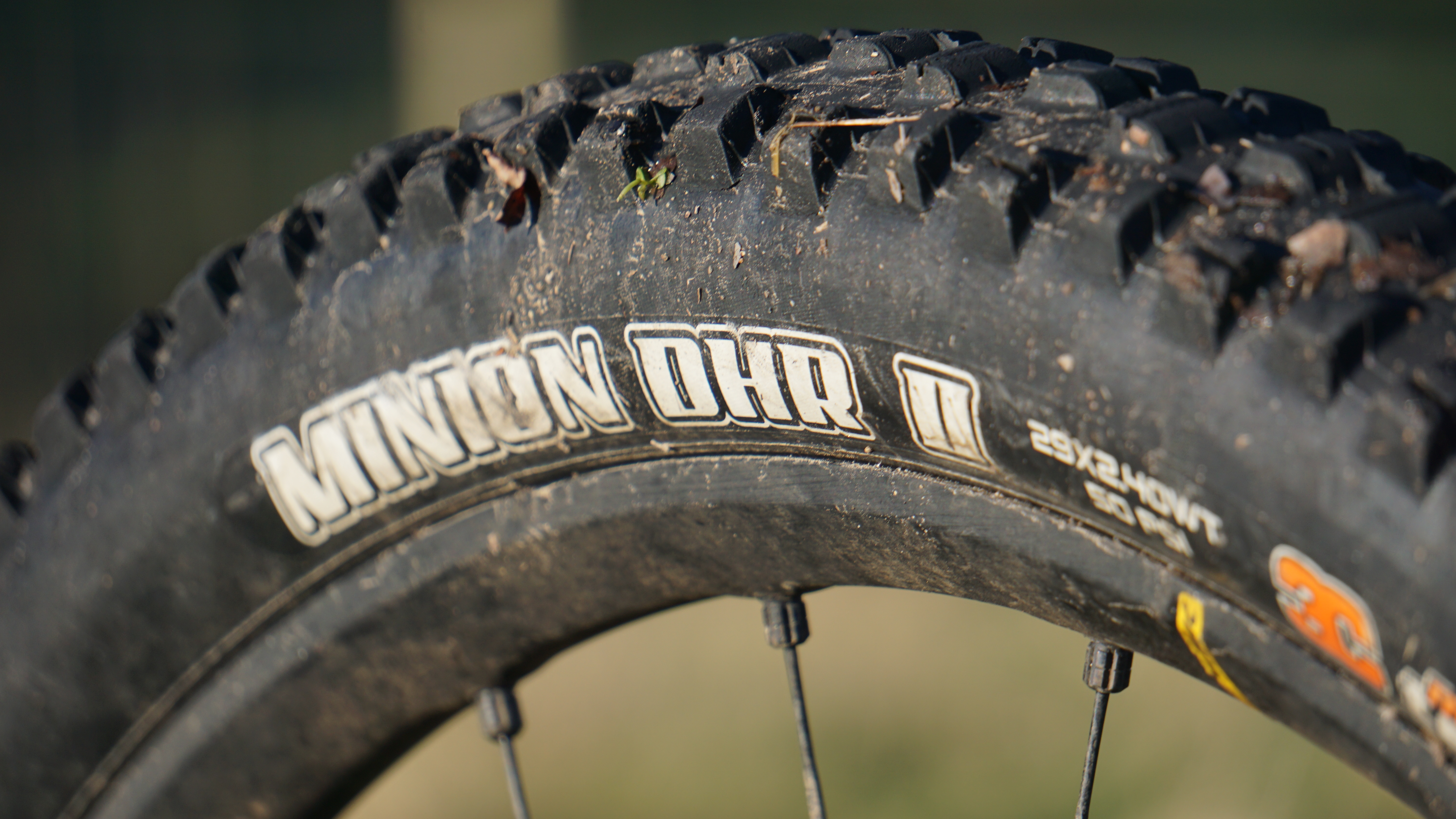
Wrapping those wheels os my go to winter rubber from Maxxis. Up front is a Maxxis Shorty Gen 2 in MaxxGrip compound and out back is a Maxxis Minion DHR II. My local trails (and a lot my general riding) are pretty steep and natural and this combination is perfect for the wetter months.
The Shorty is top of tree for grip on steep natural, rutty trails and digs in, an doffers grip in even the worst conditions. I used to swap to a Maxxis Wet Scream when things got really bad but since the Gen 2 Shorty came out I’ve not felt the need. The DHR II is just a dependable rear tyre and offers predictable grip on steeps and in turns, and the slightly narrower 2.4 casing helps in the mud,.
Drivetrain
The drivetrain I’m running is a mix of SRAM and Race Face. Shifting is taken care of by SRAM in the form of a SRAM GX Eagle AXS set up which is properly good. Is electronic shifting necessary? No, but it’s bloody good and I really rate it.
Cranks and BB are both from Race Face, and cranks are a set of 165mm Turbines. I like alloy cranks as I tend to bash them into things, and I fancied trying shorter cranks for a bit of extra clearance, so when these turned up I jumped at the chance to try them.
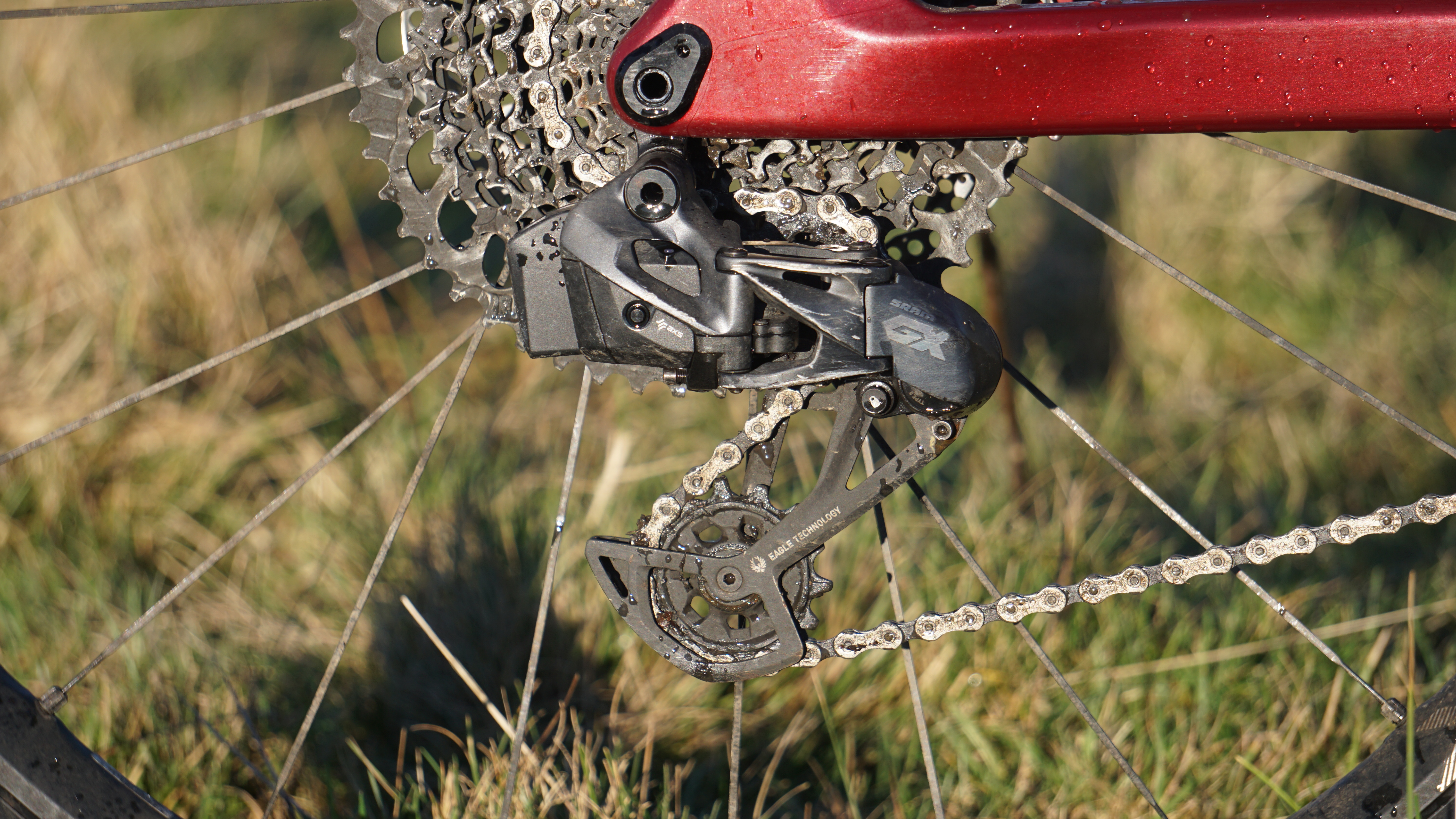
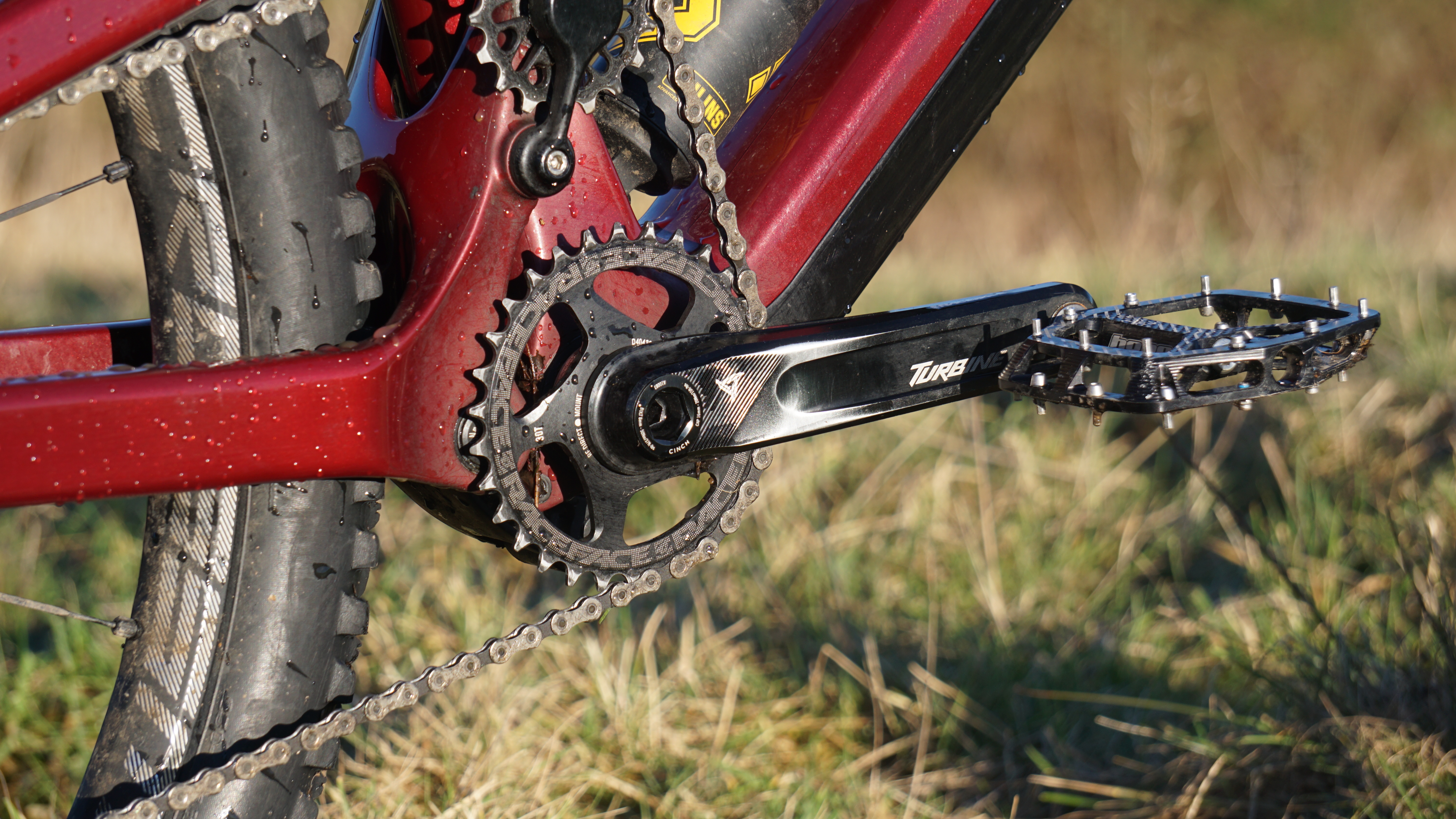
Contact Points
Contact points are a key part of any bike and I can get pretty particular about them. Grips have to be nice and thin and sticky, pedals should be flat, big and grippy, and saddles need to be low profile but comfortable.
I’m running a Gusset G2 saddle which ticks the box for low profile and most of time for comfortable. If I’ve been using other saddles for a while (test bikes etc) it can feel a little ‘firm’ until my rear readjusts.
That G2 saddle is perched above a PNW 200mm dropper that is actuated by a Wolftooth light action remote. The dropper has been a proper workhorse and has been fitted to a different bikes. It’s still working well but is starting to show signs of needing a little TLC
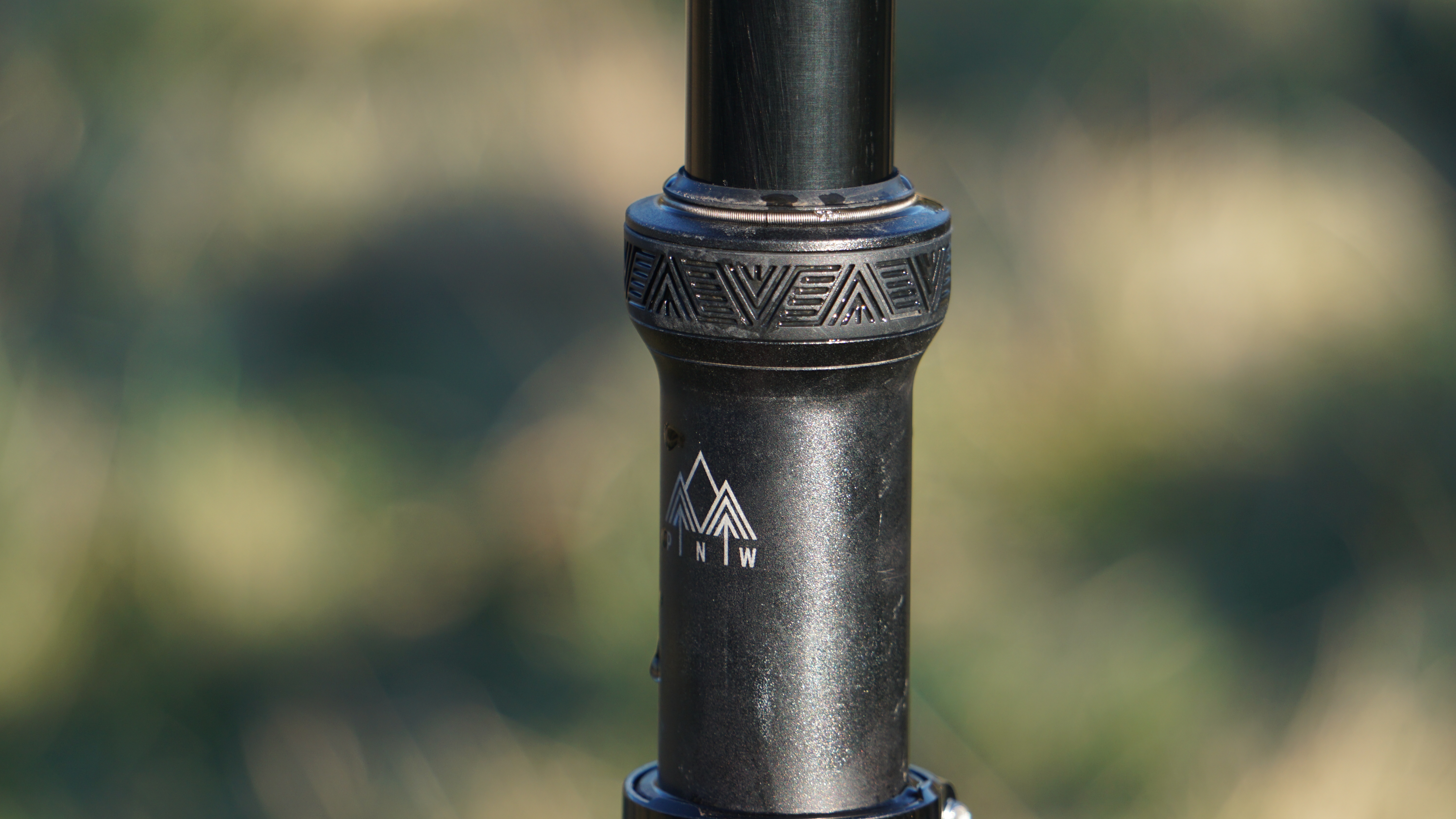

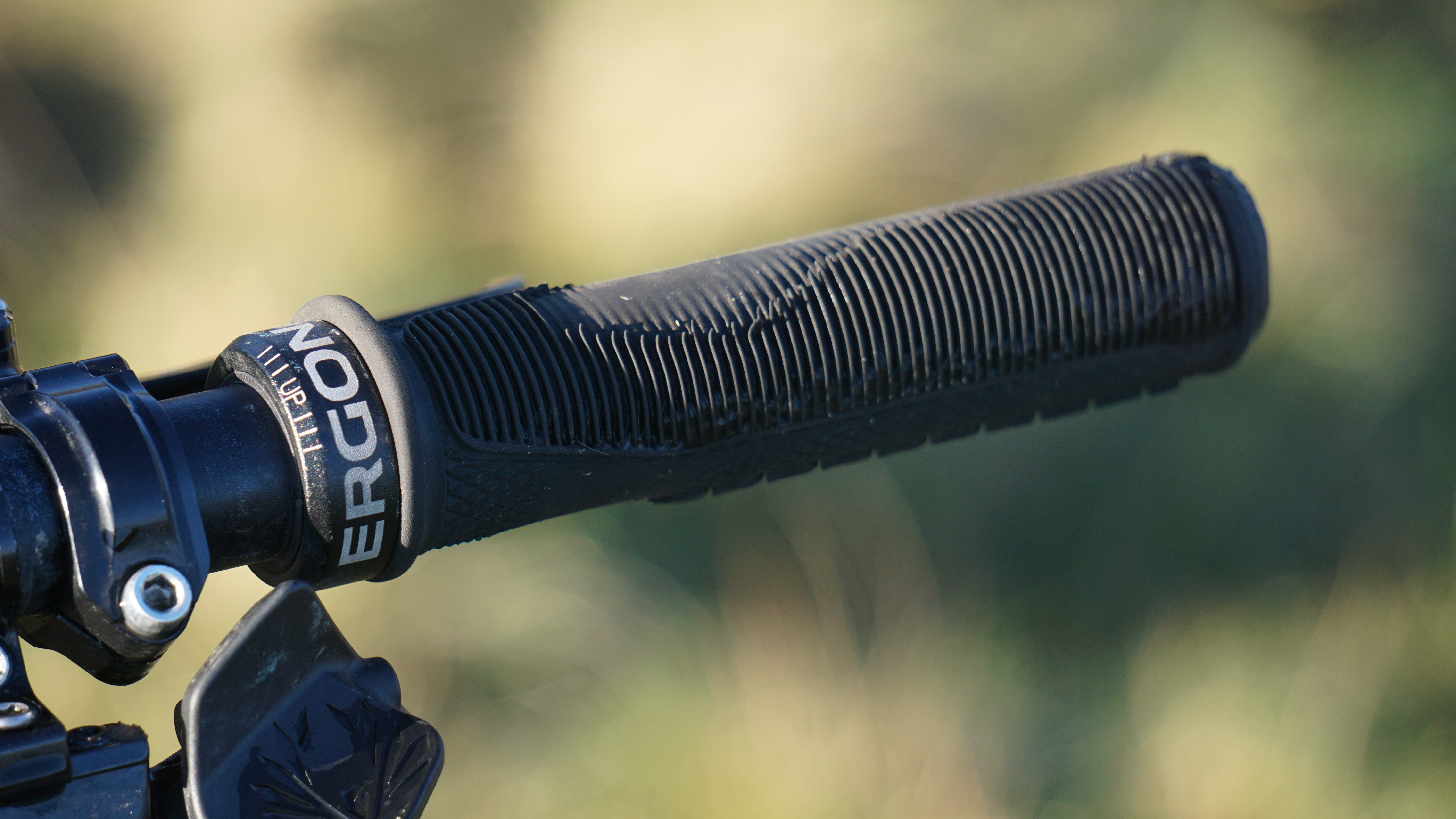
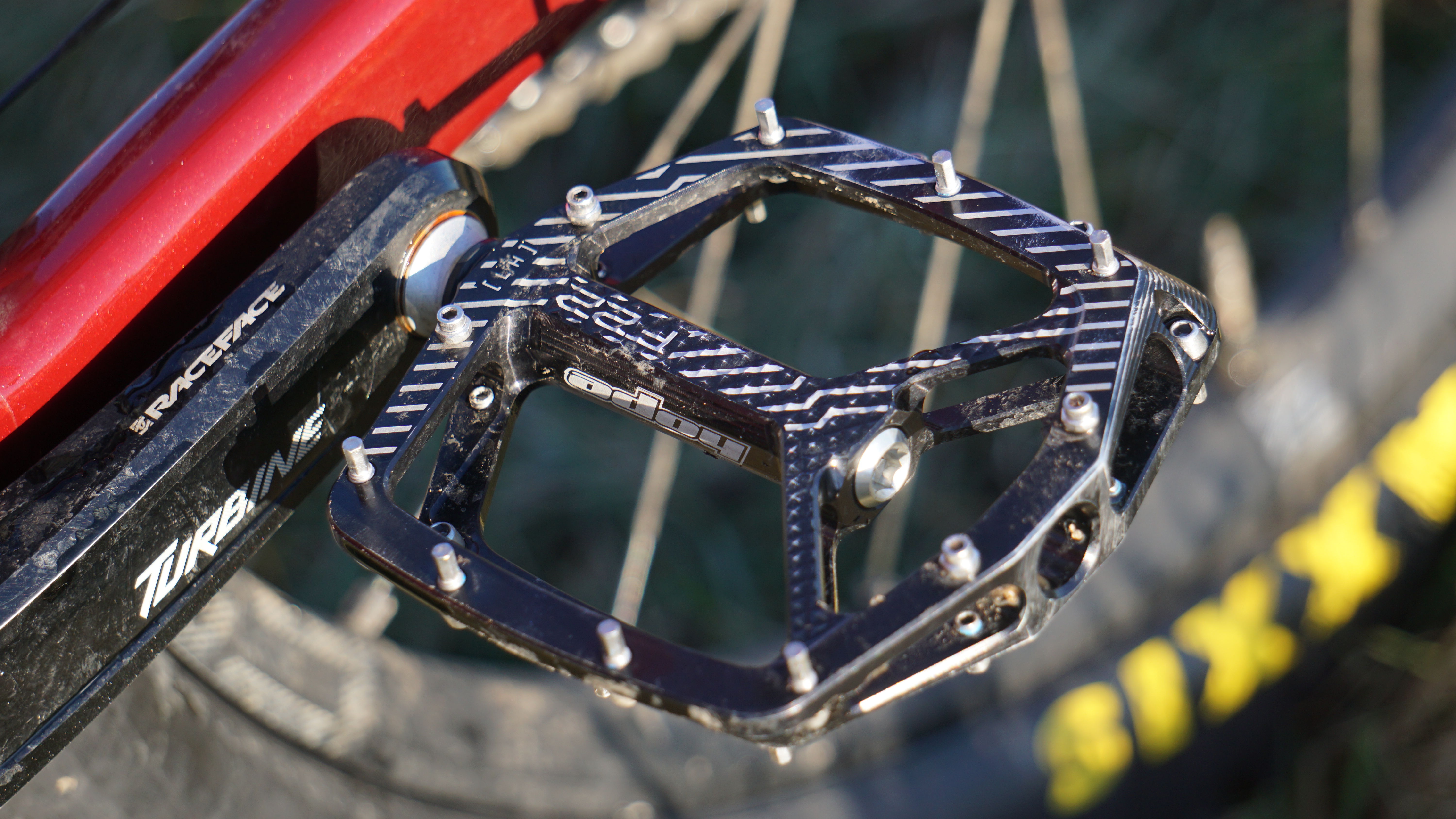
Current flat pedals are the brand new Hope F22 and so far I’m impressed with them. I only ever briefly tried the Hope F20 and wasn’t particularly keen on them. The F22 seems like a vast improvement and has so far proven to be supportive and grippy.
The final, and arguably most important contact point for me ,is the the grips and I’m running my current favourites – Ergon GFR1s. They are really nice and thin, are plenty grippy and are comfortable with or without gloves. This is now my third set and I can’t see myself changing.
Cockpit
Bar and stem choice can really alter how a bike feels and, like so many other things (grips, saddles etc), they can be really subjective and down to personal preference.
I’m running a Burgtec Ride High Josh Bryceland 38mm rise bar (35mm clamp) held in place with a Burgtec Enduro MK3 stem in 35mm length. I’m running them at full 800mm width. I just really get on with the shape of these, to the point have a spare set to as a ‘control’ set to put on test bikes if I’m not getting on with the stock setup (I’m looking at you, overly stiff carbon bars). This set are a few years old now and have been on a good few bikes, as can be seen by the general tatty look and worn anodising, but they’re still going strong and I’ve no plans on changing them yet.
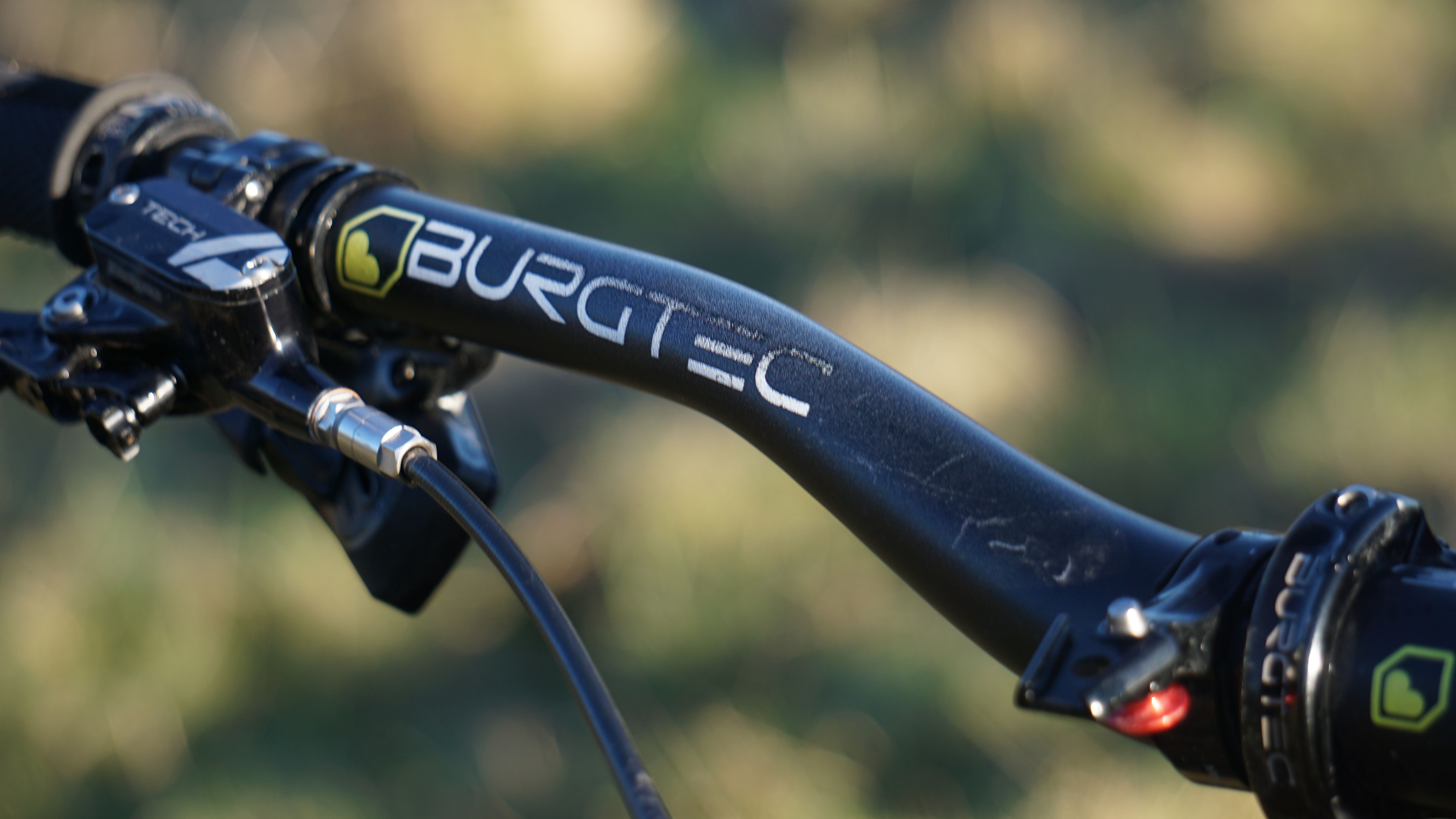
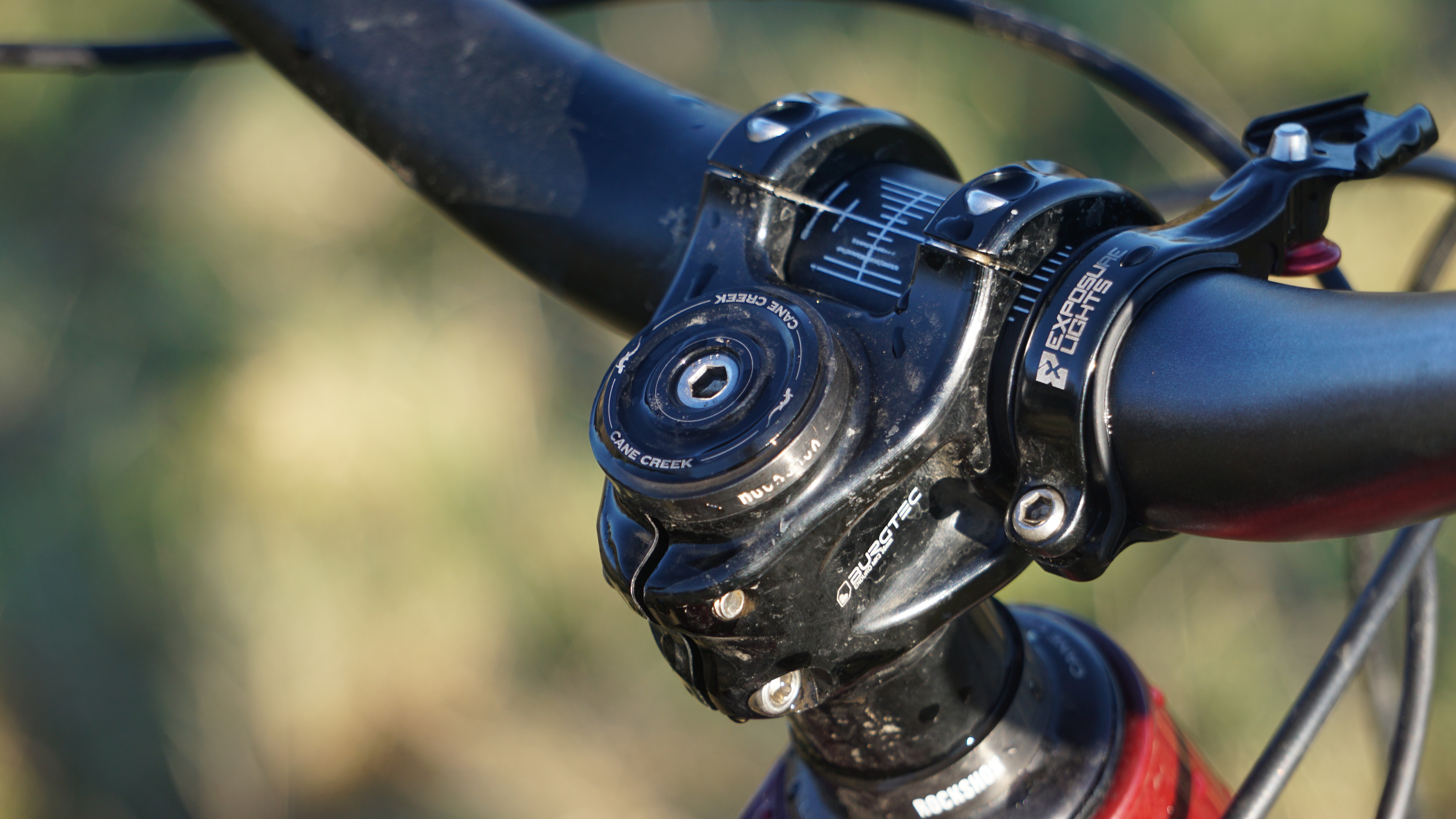
Accessories
As mentioned up there, the frame has mounts for both a bottle and accessories. I’m running a Fidlock bottle as I really like the ease of them, as well as not having a cage. I’ve got the 600ml bottles and they fit in with room.
For storing tools and spares I’m using a bolt on Canyon Frame Bag (long bracket) from their bikepacking and bike bag range. It’s made a tough, waterproof material and has space to fit all the bits you need. In mine is a spare hanger, a multitool, tubeless repair and CO2 inflator.
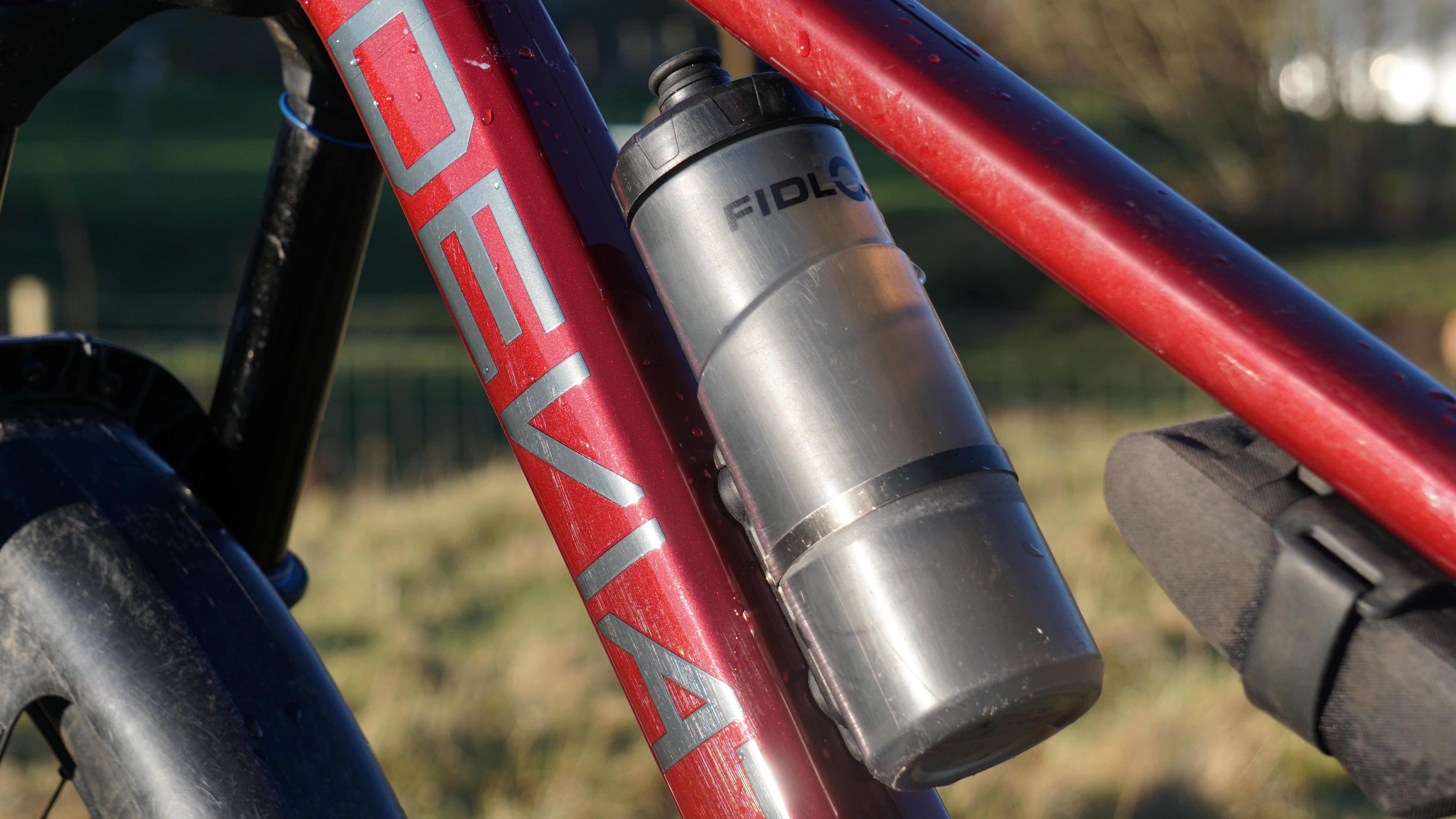
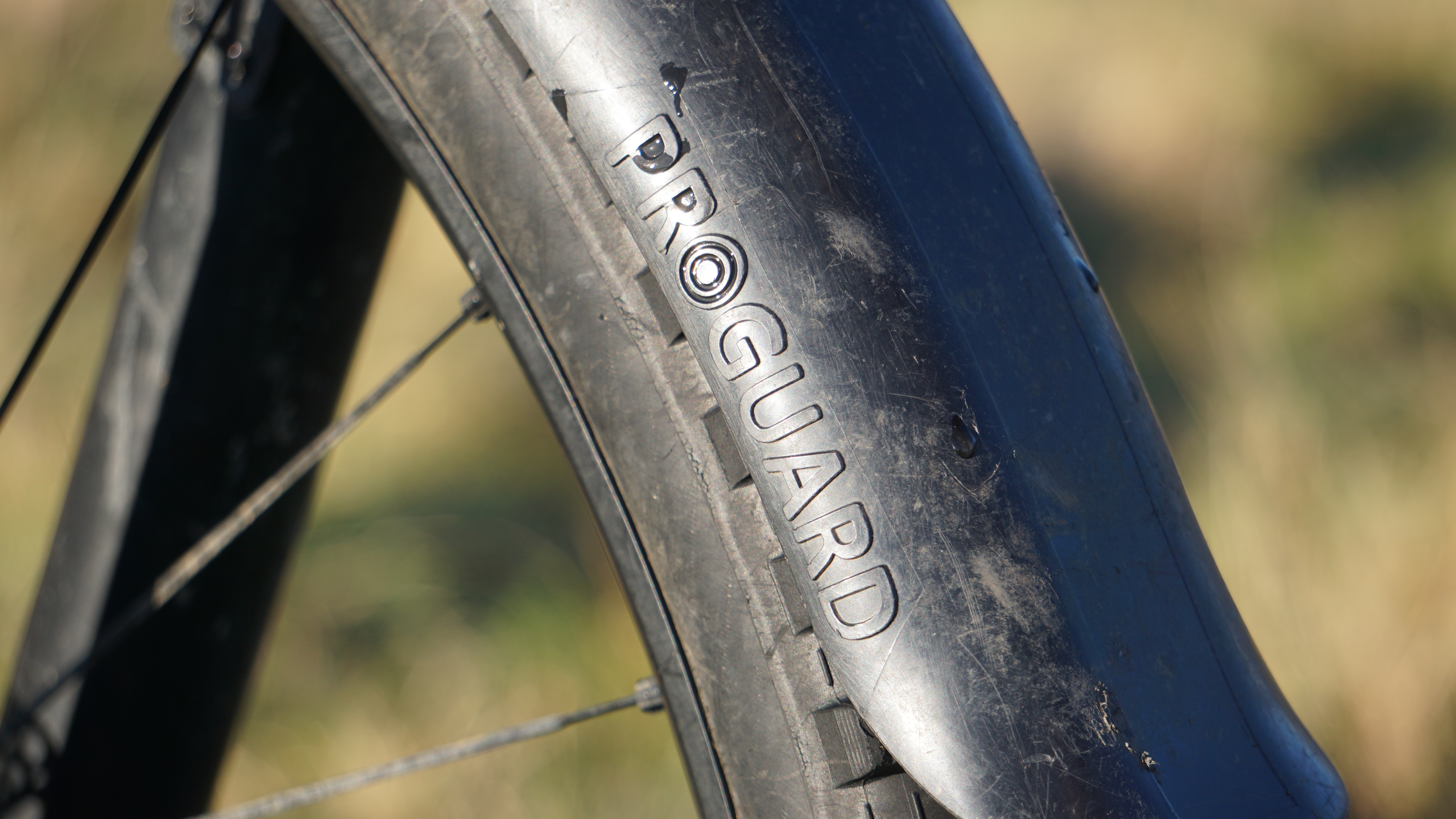
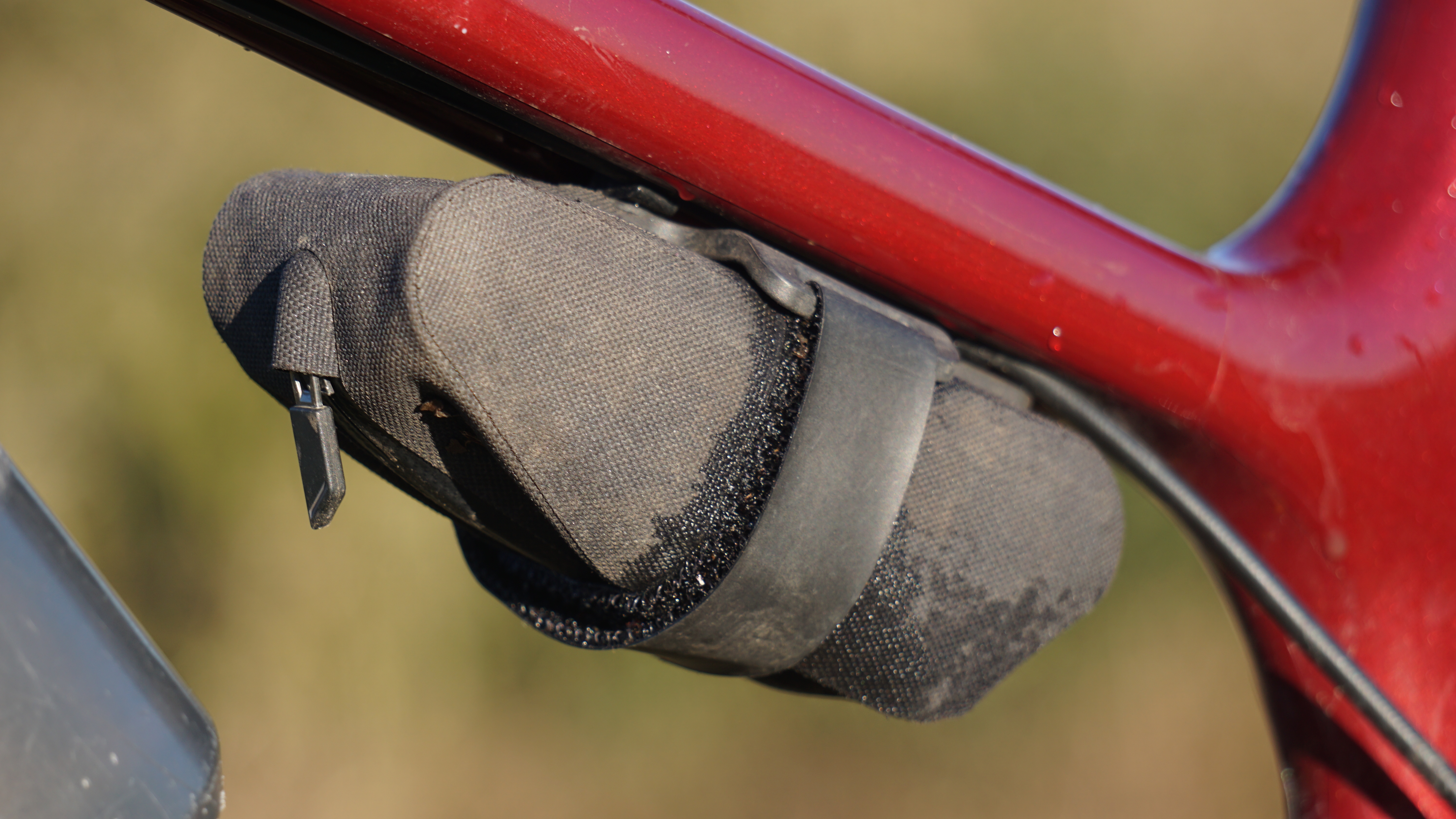
I always run some form of mudguard on my bike, and at this time of the year the bigger the better. I’m currently running, and have for a few years, an RRP Proguard. It may not be pretty, but it’s certainly big and does a sterling job of the muck out of my face
Any questions?
That’s it, my Deviate Claymore build. Let us know what you think in the comments and I’ll try to answer any questions you have.
Join our mailing list to receive Singletrack editorial wisdom directly in your inbox.
Each newsletter is headed up by an exclusive editorial from our team and includes stories and news you don’t want to miss.

